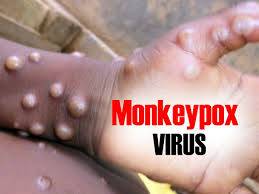Understanding Monkeypox: A Comprehensive Overview
Monkeypox is a viral disease that has garnered increased attention in recent years, particularly following outbreaks outside its traditional endemic regions. Understanding this disease, its symptoms, transmission, and preventive measures is crucial for public health and safety.
What is Monkeypox?
Monkeypox is caused by the monkeypox virus, which belongs to the Orthopoxvirus genus in the family Poxviridae. The disease was first identified in laboratory monkeys in 1958, but it primarily occurs in rodents and other small mammals in Central and West Africa. The first human case was reported in the Democratic Republic of the Congo in 1970.
Symptoms of Monkeypox
The symptoms of monkeypox are similar to those of smallpox, albeit generally milder. They typically appear within 7 to 14 days after exposure to the virus but can range from 5 to 21 days. The illness can be divided into two phases:
1. Prodromal Phase: This initial phase lasts 1 to 5 days and includes fever, headache, muscle aches, backache, swollen lymph nodes, chills, and exhaustion.
2. Rash Phase: After the prodromal phase, a rash develops, usually starting on the face and spreading to other parts of the body. The rash goes through several stages, including macules, papules, vesicles, pustules, and finally scabs, often taking 2 to 4 weeks to resolve.
In some cases, complications may arise, particularly in young children, pregnant women, and individuals with weakened immune systems. These complications can include severe skin infections, pneumonia, and other systemic infections.
Transmission of Monkeypox
Monkeypox is primarily transmitted to humans through direct contact with infected animals, particularly rodents. Human-to-human transmission can also occur, typically through respiratory droplets, direct contact with bodily fluids, or through contact with contaminated materials, such as bedding or clothing. The virus can remain viable in these materials for extended periods.
Recent outbreaks have highlighted the potential for monkeypox to spread in human populations, particularly in settings where close contact occurs, such as households and healthcare facilities. Sexual transmission has also been observed, which has contributed to its spread in certain communities.
Diagnosis and Treatment
Diagnosing monkeypox involves clinical evaluation and laboratory testing. Healthcare providers look for characteristic symptoms, particularly the rash, and may perform PCR tests on skin lesions or bodily fluids to confirm the presence of the virus.
Currently, there is no specific antiviral treatment for monkeypox. Supportive care is the primary approach, focusing on alleviating symptoms and preventing complications. In some cases, antiviral medications used for smallpox may be effective, and vaccination with the smallpox vaccine can provide cross-protection against monkeypox.
Prevention and Control
Preventing monkeypox requires a multi-faceted approach:
1. Avoid Contact with Infected Animals: Individuals in endemic areas should avoid handling wild animals, particularly rodents, and practice good hygiene when dealing with potential sources of infection.
2. Public Health Measures: Surveillance, contact tracing, and quarantine measures during outbreaks are essential for controlling the spread of the virus.
3. Vaccination: Vaccination with the smallpox vaccine has been shown to provide some protection against monkeypox. High-risk individuals, including healthcare workers and those in close contact with infected patients, may be advised to receive the vaccine.
4. Education and Awareness: Raising awareness about the signs and symptoms of monkeypox, along with preventive measures, is vital for reducing transmission.
Conclusion
Monkeypox is a zoonotic disease that poses significant public health challenges, particularly in light of recent outbreaks. Understanding its transmission, symptoms, and prevention strategies is essential for mitigating its impact. Continued research and public health initiatives will be crucial in managing this disease and protecting communities worldwide. As global travel and trade increase, vigilance and preparedness remain key in preventing future outbreaks of monkeypox.



No comments yet
Be the first to share your thoughts!